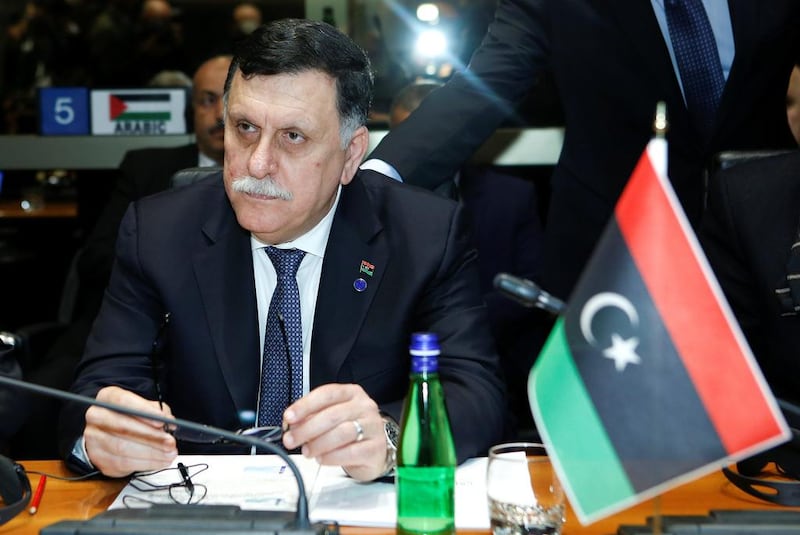Italian prime minister Paolo Gentiloni met his Libyan counterpart Fayez Al Sarraj in Rome on Monday hoping to win agreement on a deal to block Libya’s migrant smugglers, but how much leverage Mr Al Sarraj has back home is an open question.
Italy is determined to halt migrants from entering its shores through Libya – and migrant deaths at sea – set to outstrip last year’s record total of 180,000.
On Sunday, the Italian coastguard and a number of private rescue boats scooped 3,000 migrants from 22 makeshift rafts off Libya while at least three migrants were washed up on the shores in the west of the country.
Mr Gentiloni has begun negotiations on a deal to return migrants arriving in Italy to Libya, coupled with the promise of €200 million (Dh790m) in aid from the European Union to house them in camps.
But Mr Al Sarraj, leader of the UN-supported Government of National Accord (GNA) has yet to form a security force under the direct control of the GNA, and without it, he may struggle to find a way to combat the powerful militias who organise the migrant-smuggling business centred on western Libya’s coastal towns.
Mr Al Sarraj is meanwhile facing a crisis in the capital Tripoli where militias fought each other for three days earlier this month.On Friday, gunmen dispersed a protest against militia rule in the central Martyr’s Square by shooting over the heads of demonstrators, forcing protestors to flee in panic.
That same day, the head of the United Nations Support Mission for Libya, Martin Kobler, reported three journalists were kidnapped.
“Highly concerned by rpts [reports] of attacks on media in Tripoli. Three [journalists] abducted. Whereabouts unknown,” he tweeted last week.
On Sunday, an unidentified militia protested outside the GNA headquarters at Tripoli’s Busetta naval base, angry about events in the east of the country where the Libyan National Army of the GNA’s rival House of Representatives parliament in Tobruk captured a militia enclave in Benghazi on Saturday, ending two years of fighting.
The protesting militia in Tripoli was angry that one eastern unit in Benghazi then controversially paraded the body of a dead commander from the militia enclave, who had been killed during the fighting, with photographs of the body spreading on social media. For some, the display of the body revived memories of the parading of the body of Libya’s former slain dictator, Muammar Qaddafi, whose body was displayed for three days by opposition forces in the western town of Misrata in 2011 at the end of the so-called Arab Spring revolution. There has been criticism of the practice on social media.
Mr Al Sarraj issued a statement on live television on Sunday night, objecting to the display of the commander’s body, while also criticising gunmen for shooting over the heads of protesters as well as criticising some protesters for using inflammatory language in their anti-militia protest.
Late on Monday, with tensions running high, the UN’s Mr Kobler appealed for calm.
“I call for all parties to put Libya and the unity of Libya ahead of their own national interests,” he said. “The violence, hate speech and mutilation of corpses in Libya is completely unacceptable. Calm must be restored.”
foreign.desk@thenational.ae





